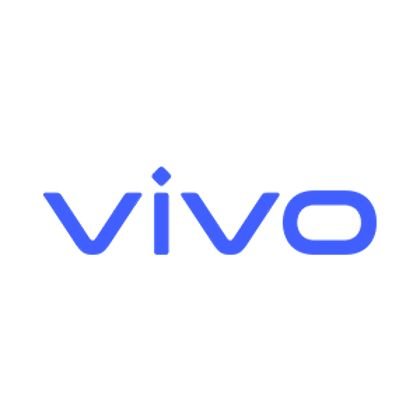
Android development has undergone a significant transformation over the years, with developers constantly searching for new tools and languages to enhance productivity and improve the quality of their applications. One of the most notable advancements in recent years has been the adoption of Kotlin as a preferred language for Android development. Created by JetBrains, Kotlin is a statically typed programming language introduced in 2011. Its popularity has grown immensely since then, and in 2017, Google officially recognized Kotlin as a first-class language for Android development, firmly establishing it as a key player in the Android ecosystem. This article delves into the various benefits of learning Kotlin for Android development, highlighting why developers should consider adopting this modern language.
1. Conciseness and Readability
One of the most prominent advantages of Kotlin is its conciseness. Kotlin code is generally more compact and readable compared to Java, the traditional language used for Android development. It reduces the amount of repetitive code that developers need to write, allowing them to express complex ideas more straightforwardly.
For instance, in Java, developers often have to write a lot of code for simple tasks like creating a data class or managing null values. Kotlin offers built-in features, such as data classes and null safety, that significantly reduce the verbosity of the code. This results in more readable code, making it easier to understand, maintain, and debug applications.
2. Null Safety
NullPointerException (NPE) is a common issue in Java that often leads to application crashes and unexpected behavior. Kotlin tackles this problem with its built-in null safety features. In Kotlin, null safety is an integral concept that helps eliminate the risk of NPEs by making nullability explicit in the type system.
Kotlin distinguishes between types that can hold a null value and those that cannot. This distinction forces developers to handle null cases explicitly, catching potential issues at compile time rather than at runtime. As a result, Kotlin leads to more robust and stable applications by reducing the likelihood of crashes caused by null-related errors.
3. Interoperability with Java
Kotlin’s full interoperability with Java is another significant benefit. This means developers can use Kotlin alongside existing Java codebases without any compatibility issues. This interoperability allows Android developers to transition to Kotlin gradually, without the need to rewrite their entire applications from scratch.
It also enables seamless interaction between Kotlin and Java code, making it easier to adopt Kotlin for new modules or features while continuing to use existing Java libraries and frameworks. This flexibility is particularly valuable for large projects where rewriting all the code in Kotlin might not be feasible.
4. Reduced Boilerplate Code
Boilerplate code refers to the repetitive, lengthy code that developers often have to write for simple tasks. Kotlin significantly reduces the need for such boilerplate code through various language features, such as data classes, default parameters, extension functions, and type inference.
For example, Kotlin’s data classes automatically generate common functions, saving developers the effort of writing them manually. This reduction in repetitive code allows developers to focus more on writing the core logic of their applications, enhancing overall productivity.
5. Extension Functions
Kotlin introduces a feature called extension functions, which allows developers to add new functionality to existing classes without modifying their original source code. This makes it easier to extend the capabilities of existing libraries or APIs, resulting in cleaner and more modular code.
Extension functions help keep related functionalities together, leading to more organized and structured codebases. This improves both code readability and maintainability.
6. Higher-Order Functions and Lambdas
Kotlin supports higher-order functions and lambdas, allowing developers to write more expressive and concise code. Higher-order functions are functions that can take other functions as parameters or return them as results, while lambdas are anonymous functions that can be used as expressions.
These features enable developers to adopt functional programming paradigms, such as immutability and pure functions, leading to fewer side effects, easier debugging, and more predictable code behavior. This ultimately improves the quality and maintainability of the code.
7. Coroutines for Asynchronous Programming
In modern Android development, handling asynchronous tasks, such as network requests or database operations, is crucial to avoid blocking the main thread. Kotlin offers coroutines, a powerful tool for managing asynchronous programming in a more intuitive and efficient way.
Coroutines simplify tasks like switching contexts, handling exceptions, and managing background operations, making asynchronous code look and behave more like synchronous code. This reduces the complexity associated with traditional methods like callbacks or thread management, leading to more readable and maintainable code.
8. Better Performance and Efficiency
Kotlin’s design includes features that contribute to better performance and efficiency, such as inline functions and smart casts. These features help reduce function call overhead and eliminate unnecessary type checks, optimizing the performance of the application.
Kotlin’s efficient bytecode production can result in smaller application sizes and faster app performance, enhancing the user experience by reducing load times and optimizing resource usage.
9. Strong Community and Support
Kotlin has a rapidly growing community and strong support from organizations like JetBrains and Google. The language is actively developed and maintained, with regular updates and improvements based on developer feedback. This active community offers a wealth of resources, including tutorials, libraries, and tools, making it easier for developers to learn and adopt Kotlin.
Additionally, Google’s official support for Kotlin as a first-class language for Android development provides comprehensive documentation, training materials, and sample projects, helping developers get started quickly and effectively.
10. Career Opportunities and Market Demand
The demand for Kotlin developers is growing rapidly, driven by its increasing adoption by companies and its status as a preferred language for Android development. Learning Kotlin can open up new career opportunities, as many organizations are actively seeking professionals with expertise in Kotlin and Android development.
By mastering Kotlin, developers can position themselves for high-demand roles, enhance their employability, and take advantage of new opportunities in the dynamic field of mobile app development.
11. Seamless Integration with Modern Development Tools
Kotlin seamlessly integrates with modern development tools and environments. It is fully supported in Android Studio, the official integrated development environment (IDE) for Android development. Android Studio provides extensive tooling for Kotlin, including intelligent code completion, real-time error checking, refactoring, and debugging.
Kotlin also works well with various build tools, making it easy to incorporate into existing Android projects and ensuring a smooth and efficient development experience.
12. Future-Proofing Your Skills
Learning Kotlin is a strategic move for developers looking to future-proof their skills. As the official language for Android development, Kotlin is expected to play a central role in the future of mobile app development. Google’s continued investment in Kotlin makes it a safe choice for developers who want to stay competitive and relevant in the job market.
By learning Kotlin, developers equip themselves with the knowledge and skills needed to adapt to the evolving Android ecosystem and take advantage of the latest tools, libraries, and frameworks, ensuring long-term career success.
13. Improved Developer Satisfaction and Productivity
Kotlin is designed to improve developer satisfaction and productivity. Its concise syntax, reduced boilerplate, and powerful features make coding more enjoyable and less tedious. Developers can focus on solving problems and building innovative solutions rather than dealing with the frustrations of verbose or cumbersome code.
The robust tooling support, interoperability with Java, and seamless integration with Android Studio also contribute to a more efficient and streamlined development process, leading to higher job satisfaction and productivity.
14. Adoption by Major Companies
Many major companies, including Google, Pinterest, Trello, Basecamp, and Netflix, have adopted Kotlin for their Android apps. This widespread adoption demonstrates Kotlin’s effectiveness and reliability in real-world applications. Learning Kotlin allows developers to work with a language that has proven results in large-scale projects, preparing them to meet the demands of the modern job market.
The use of Kotlin by leading companies also provides numerous examples, case studies, and open-source projects that developers can learn from and contribute to, helping them gain practical experience.
Conclusion
Kotlin offers numerous advantages for Android development, from its concise syntax and null safety features to its full interoperability with Java and support for modern programming paradigms. Learning Kotlin empowers developers to build robust, efficient, and high-performing Android applications while enhancing productivity and job satisfaction.
As Kotlin continues to gain traction and become more deeply integrated into the Android ecosystem, developers who learn Kotlin today will be well-positioned for a successful career in mobile app development. With strong community support, growing market demand, and seamless integration with modern development tools, Kotlin is a valuable skill that helps developers stay ahead of the curve in the fast-evolving world of technology.








